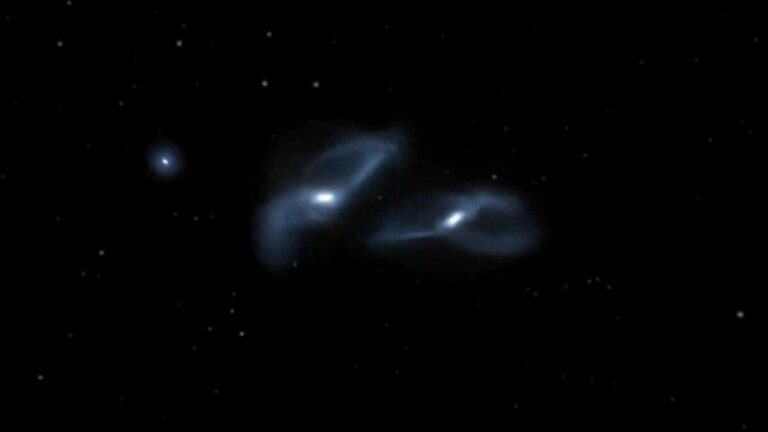The latest discovery shows that the galaxies Andromeda and the Milky Way have started to merge.
It is a common observation that the Andromeda Galaxy, located just beyond the Square of Pegasus, is heading towards a collision with our Milky Way galaxy. However, it is important to stress that this cosmic event is not expected to happen for billions of years. Recent studies suggest that we might already be witnessing hypervelocity stars that have been ejected from Andromeda, indicating that the star exchange between the two galaxies may have already started before their eventual merger.
Stars are typically seen as stationary objects in the sky, except for their gradual movement due to the Earth’s rotation. In reality, stars do move, but the vast distances in space make their motion almost imperceptible. Barnard’s star in the Ophiuchus constellation is an exception, moving about 10.39 seconds of arc annually (for comparison, the full Moon measures 1,900 seconds of arc in diameter).
Hypervelocity stars (HVSs) are a fascinating group of stars that are among the fastest objects in our galaxy, with velocities around 1,000 km per second—much faster than Earth’s velocity through space, which is approximately 30 km per second. The first HVS was identified in 2005, and since then, more have been discovered, some of which have the potential to escape the Milky Way entirely.
Typically, stars move in response to their orbits around the galactic center. For example, our Sun takes around 220 million years to complete one orbit around the center of the Milky Way. The high velocities of HVSs are thought to come from gravitational interactions between binary stars and black holes. This idea was proposed by Jack Gilbert Hills, a stellar dynamicist who was born on May 15, 1943. In this process, one star from a binary system is captured by a black hole while the other is ejected at a high velocity. Other theories suggest that a star can be ejected from a binary system due to a supernova explosion or as a result of interactions within the galaxy.
To understand the interactions between the Milky Way and the Andromeda Galaxy, a team led by Lukas Gülzow from the Institute for Astrophysics in Germany conducted detailed analyses. This involved studying the relative motion of the two galaxies, creating models of the gravitational potential of the entire system, and generating simulations of stellar motion to show the paths of HVSs.
The study calculated the paths of 18 million HVSs for two different scenarios—one assuming equal mass for both galaxies, and the other with the Milky Way having approximately half the mass of Andromeda. The initial positions of the HVSs in the simulation were randomly generated around the center of Andromeda, with random directions of ejection. The results showed that approximately 0.013% and 0.011% of HVSs are currently within a radius of 50 kpc around the center of the Milky Way.
The research also analyzed the speed of HVSs upon reaching their destination, taking into account simulations of galaxy mass. It was observed that many HVSs maintain their original speed, however, a considerable number may deviate from the main sequence as a result of their journey duration. Some HVSs slow down enough to be captured by the Milky Way.
The team cross-referenced the simulated star positions with high-velocity star positions obtained from Gaia data (Release 3) and noted a correlation between the simulated position distribution and the Gaia data. The study suggests that it is highly likely for HVSs originating from Andromeda to migrate towards the Milky Way. Although their arrival in large quantities is not expected, they are predicted to spread evenly around the center of the Milky Way. Identifying them based on stellar speed and paths could be a viable option, but further research is necessary to progress in that direction.
Do not forget to share your opinion with us to provide you with the best posts !




0 Comments